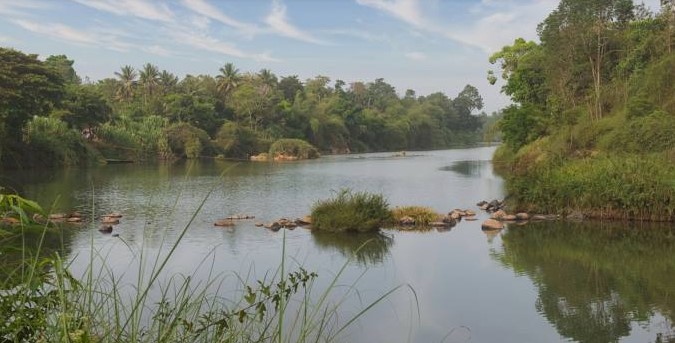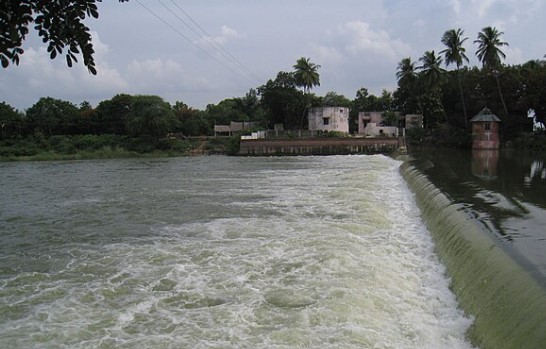- This is one of the 276 Devara Paadal Petra Shiva Sthalams and 26th Shiva Sthalam on the northern bank of the river Cauvery in Chozha Nadu (Vadakarai).
- Lord Shiva in this temple is a Swayambumurthi (self-manifested).
- This is one of the Atta Veeratta Sthalams.
- This west facing temple has two corridors and it has a 5-tiered main tower (Rajagopuram).
- The last consecration ceremony (Kumbabishekam) took place on 29.04.1959.
- Veeratteswarar Temple is a Hindu Temple dedicated to Lord Shiva located in Korukkai Village in Mayiladuthurai Taluk in Mayiladuthurai District of Tamil Nadu. Presiding deity is called as Veeratteswarar and Mother is called as Gnanambigai. This Temple is considered as one of the Atta Veerattanam Temples (Atta means eight and Veeram means bravery).
- This Temple is considered as one of the shrines of the 276 Paadal Petra Sthalams glorified in the early mediaeval Thevaram hymns.
- This Temple is the 80th Devara Paadal Petra Shiva Sthalam and 26th sthalam on the north side of river Cauvery in Chozha Nadu.
- Lord Murugan of this Temple is praised by Saint Arunagirinathar in his revered Thirupugazh hymns.
PURANIC SIGNIFICANCE:
- The historical names of this place are Yogeesapuram, Kaamathakanapuram and Kampakaapuram.
- The stone inscriptions in this temple date back to the periods of Chola and Vijayanagara kingdoms.
- This temple is under the administrative control of Dharumapuram Adheenam.
- Atta Veeratta Sthalams
- In Hindu mythology, there are eight special places where it is believed that Lord Shiva vanquished various demons and exhibited acts of bravery. These places are Veeratta Sthalams. In Tamil, this is referred to as “Atta Veerattanam” (“Atta” means eight and “Veeram” means bravery). Thiru Kurukkai is the seventh Veeratta Sthalam where Lord Shiva was believed to have been burnt by Manmathan and later blessed.
The other seven Veeratta Sthalams are –
- Thirukkandiyur where one of Lord Brahma’s five heads was plucked;
- Thirukkovilur where the demon Andhakasuran was vanquished;
- Thiruvathigai where the lord is believed to have done the “Thiripura Samharam”.
- Keezha Parasalur where Dakshan’s yagna was stopped and he was killed;
- Thiruvirkudi where the demon Jalandharasuran was killed;
- Thiru Vazhuvur where the elephant Gajasuran was vanquished;
- Thirukkadaiyur where Lord Yama was believed to have been kicked and punished to save Markandeya.
Kama Dahana Murthy
According to legend, the powerful asura Taraka performed intense penance to Lord Brahma, securing a boon that he could only be defeated by the son of Lord Shiva. After the death of his first wife, Sati, Lord Shiva withdrew into deep meditation and renounced thoughts of marriage. With his newfound power, Taraka unleashed chaos upon the universe, defeating the gods and threatening the stability of heaven.
In desperation, the devas and sages sought a solution from Lord Brahma, who informed them of the need for Shiva’s son to vanquish Taraka. As Lord Shiva remained in deep meditation in Korukkai, no one dared to interrupt him. Thus, the gods turned to Manmadha, the god of love, instructing him to inspire Lord Shiva to fall in love again. Manmadha, accompanied by his wife Rati, approached Shiva and shot his love arrows.
However, disturbed by this interference, Lord Shiva opened his third eye and incinerated Manmadha with fire. Rati fell at Shiva’s feet, pleading for her husband's life. Compassionately, Lord Shiva restored Manmadha to life in both physical and formless states. This event led to Shiva being referred to as Kama Dahana Murthy, or Kama Anga Naasan. The marks of the love arrows are said to still be visible on the Lingam.
Following this incident, Lord Shiva, now drawn to Parvati-an incarnation of Sati--eventually united with her. From their union, Lord Kartikeya was born, who later defeated Taraka. Meanwhile, Lord Vishnu mourned Manmadha’s demise, as he was the one who had created him, leading to Vishnu being known in this temple as Soha Hareswarar, meaning "the one who feels sorrow."
Kurungai Munivar
Legend has it that a sage named Theerthavahu frequently visited Shiva temples, using his divine powers to pour Ganga water over the Shiva Lingas. Upon reaching this temple, he unknowingly extended his arms towards the heavens to collect the sacred water from the Soola Theertham. Unfortunately, his arms shrank, preventing him from performing the ritual.
In his distress, Theerthavahu prayed to Lord Vinayaga and Lord Shiva, who restored his arms to their original form. As a result of this miracle, the sage earned the name Kurungai Munivar (where "Kurungai" means short arms), and the place became known as Kurungai, later evolving into Korukkai. A sculpture of Kurungai Munivar can be found in the Kurungai Vinayagar shrine.
Yogeeswarar
In another tale, Lord Shiva, after disrupting the Yagna of Daksha, chose to meditate under the Kadukkai tree in this area, earning the title Yogeeswarar. It is believed that his tears of joy during meditation merged with the waters of Pazhavaru (Gnana Theertham) flowing to the north of the village.
Other Names
Korukkai has also been known by various names, including Kaduvanam, Thirukkurukkai, Yogeesapuram, Kaamathakanapuram, and Kampakaapuram.
Worshippers
The site is historically significant, with revered figures such as Lord Brahma, Lord Vishnu, Lakshmi, Murugan, Kurungai Munivar, the Devas, Manmadha, and Rati having worshipped Lord Shiva here, enhancing its spiritual legacy.
Thiruppugazh Sthalam:
Saint Arunagirinathar had sung Thirupugazh Hymns on Lord Murugan of this Temple. Hence, this temple is considered as Thirupugazh Sthalam.
ADMINISTRATION:
The administration of Sri Veeratteswarar Temple at Thiru Kurukkai (Korukkai) is typically overseen by a board of trustees or a temple committee. This body is responsible for managing daily operations, maintenance, and the organisation of religious activities and festivals.
577bf7.jpg)

